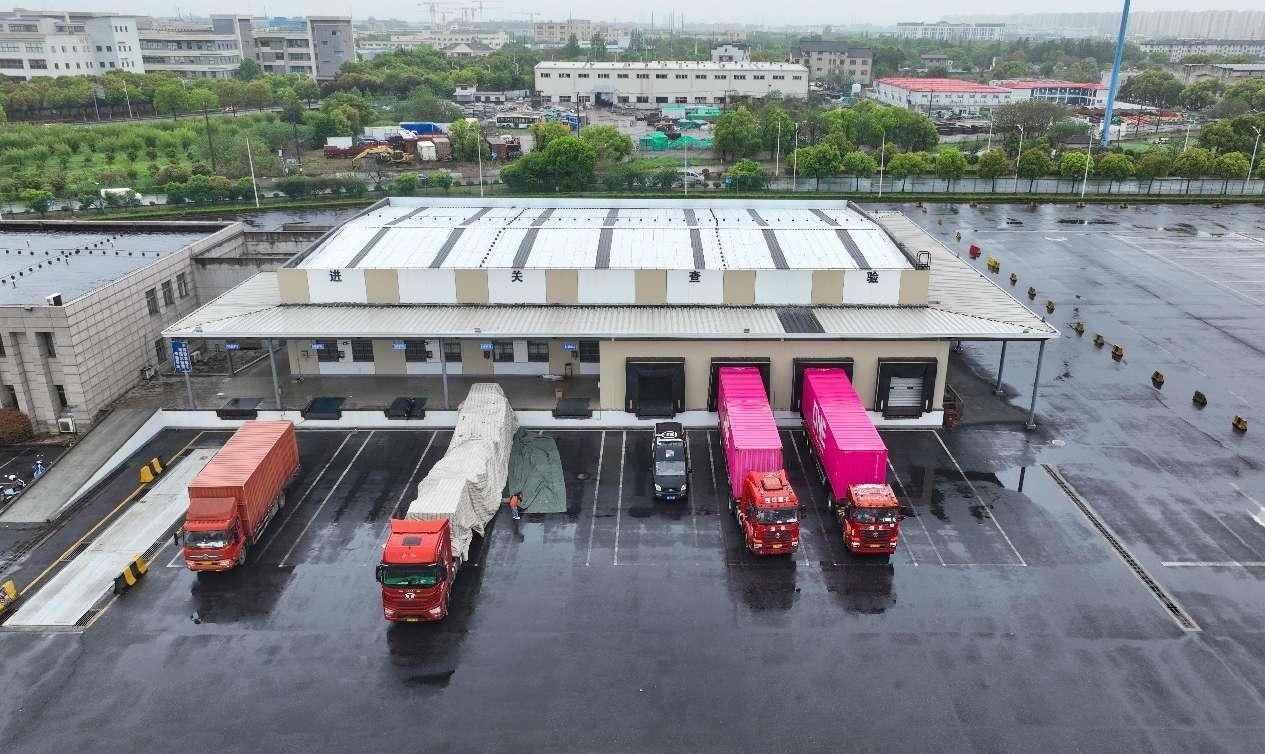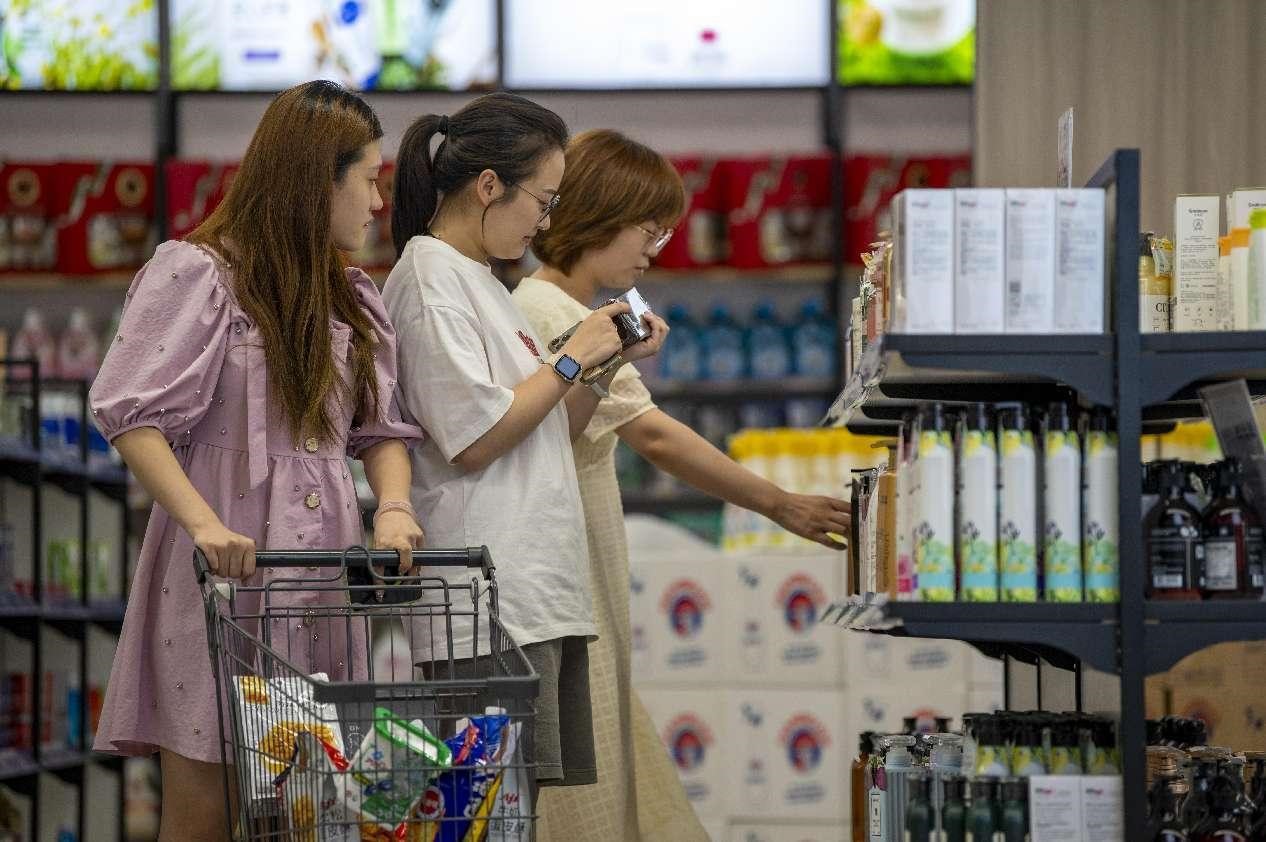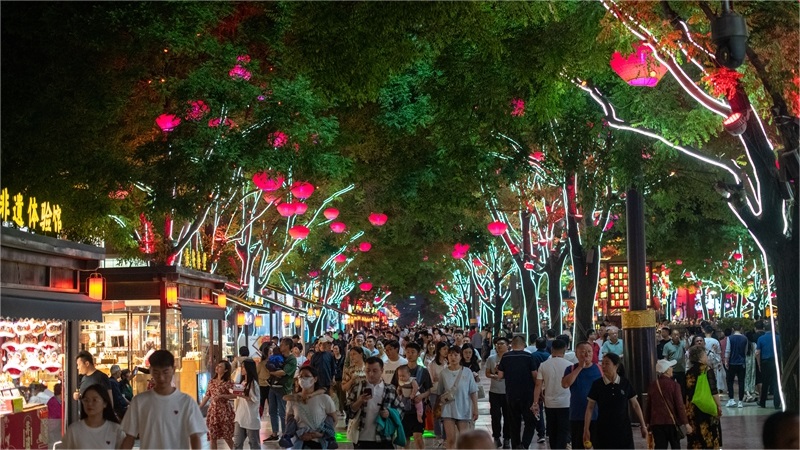China sees continuous development of comprehensive bonded zones
Comprehensive bonded zones (CBZs), known for their high-level openness and streamlined customs clearance procedures, are special customs supervision areas established by the Chinese government.
Many preferential policies are available in China's CBZs, including tax refunds upon entry, bonded imports, and free movement of goods within the zones, which can significantly reduce the institutional costs of transactions.

Cargo trucks wait for inspection at the Songjiang comprehensive bonded zone in east China's Shanghai. (People's Daily Online/Jiang Huihui)
Over the past decade, the number of CBZs in China has been steadily growing since the first one became operational in 2007. So far, over 160 CBZs have been set up in 31 provinces, autonomous regions, and municipalities across the country.
The Beijing Zhongguancun comprehensive bonded zone (hereafter referred to as "Zhongguancun CBZ"), the first one in China featuring research and development (R&D) and innovation, has passed acceptance review in April. The bonded zone has a planned area of 0.4 square kilometers and an industrial space of 660,000 square meters. It will develop integrated circuit and pharmaceutical industries as the core, and artificial intelligence and technology service industries as the focus. Besides, it aims to expand bonded service formats, including headquarters economy, cross-border e-commerce, among others.
The first phase of the Zhongguancun CBZ involves an industrial space covering 100,000 square meters, which will accommodate the main facilities of 11 enterprises, including HyperStrong, Naton Technology Group, and Agile Robots.
"The Zhongguancun CBZ is a crucial experiment to examine how CBZs can contribute to sci-tech innovation," said Feng Bin, deputy head of Beijing Customs.
According to Feng, by leveraging the policy advantages, the Zhongguancun CBZ aims to cultivate new business models that integrate bonded trade with other elements, drive technological innovation and foster new quality productive forces within the zone, while also strengthening industry collaboration inside and outside the zone.
Here is a vivid example to showcase the efficiency of China's CBZs. In the past, Suzuki cars manufactured in India had to pass through South Korea before being exported to Central and South America, which involved multiple transfers, customs declarations, and other intricate processes.
Today, things are not the same anymore. The vehicles can be temporarily stored in the Yangshan special comprehensive bonded zone (hereafter referred to as "Yangshan special CBZ") in east China's Shanghai municipality, and later shipped to their final destinations.

Staff members inspect an engine to be delivered in a maintenance workshop of the Haikou airport comprehensive bonded zone in south China's Hainan province. (People's Daily Online/Su Bikun)
Shou Shunyang, an official with Yangshan Customs, used a recent batch of goods as an example to illustrate the bonded vehicle transit business within the zone, where the production and market ends are both outside of China.
On April 26, a total of 2,687 Indian-made Suzuki vehicles arrived at the Nangang terminal of Shanghai and were immediately transferred in bulk to the adjacent Yangshan special CBZ for bonded storage.
Among them, 1,379 were shipped to Guatemala, Mexico, and Honduras on May 5, while the rest were destined for Chile and Nicaragua.
It is reported that since starting independent customs operation in May 2020, the Yangshan special CBZ has made continuous breakthroughs in building a new type of trade demonstration zone, a global shipping hub, and an incubator for innovative business.
Additionally, the dense shipping routes and frequent sailings at the ports in Shanghai provide more options for consolidated shipping, significantly improving efficiency and reducing costs for businesses.
It is estimated that compared to traditional routes, this shipping route can reduce the logistics cost of exporting these vehicles by 12 percent and shorten the shipping time by 25 percent.
After four years of development, the number of registered enterprises in the Yangshan special CBZ has reached 1,591, with a total import and export value exceeding 780 billion yuan ($107.73 billion), and an average compound annual growth rate (CAGR) of over 40 percent.

Consumers buy imported goods at a shopping center of the Jinyi comprehensive bonded zone in Jinhua, east China's Zhejiang province. (People's Daily Online/Hu Xiaofei)
The continuously growing and upgrading CBZs are bringing new opportunities and injecting new momentum into the development of foreign trade across China.
For instance, there are 13 CBZs in south China's Guangdong province. According to the Guangdong sub-administration of China's General Administration of Customs, in the first quarter of this year, the import and export value of bonded logistics in Guangdong's CBZs reached 139.42 billion yuan, a year-on-year increase of 16.8 percent. The total import and export value of all CBZs in the province exceeded 170.98 billion yuan, accounting for 8.4 percent of Guangdong's total foreign trade.
Besides, the Yantai CBZ in east China's Shandong province has strengthened information exchanges and resource sharing with customs, ports, and other authorities. It has improved supporting facilities and developed new business models such as cross-border e-commerce, international transit of commercial vehicles, and bonded blending of mineral products, creating more new growth drivers for foreign trade.
In the first quarter of this year, the import and export volume of the Yantai CBZ exceeded 20 billion yuan, accounting for about a fifth of the city's total foreign trade.
According to industry insiders, China's special customs supervision areas represented by CBZs have emerged as important platforms driving the development of an open economy.
Last year, the total import and export value of goods in China's CBZs surpassed 6 trillion yuan, accounting for approximately 15 percent of the country's total, almost twice the amount five years ago.
Photos
Related Stories
- AEO certification streamlines foreign trade operations in NW China's Ningxia
- China's foreign trade growth accelerates amid improving demand
- China's foreign trade up 5.7 pct in first four months
- Over 5,800 AEOs account for nearly 40 pct of China's foreign trade value
- China's Heilongjiang sees foreign trade of goods up 10.3 pct in Q1
Copyright © 2024 People's Daily Online. All Rights Reserved.









